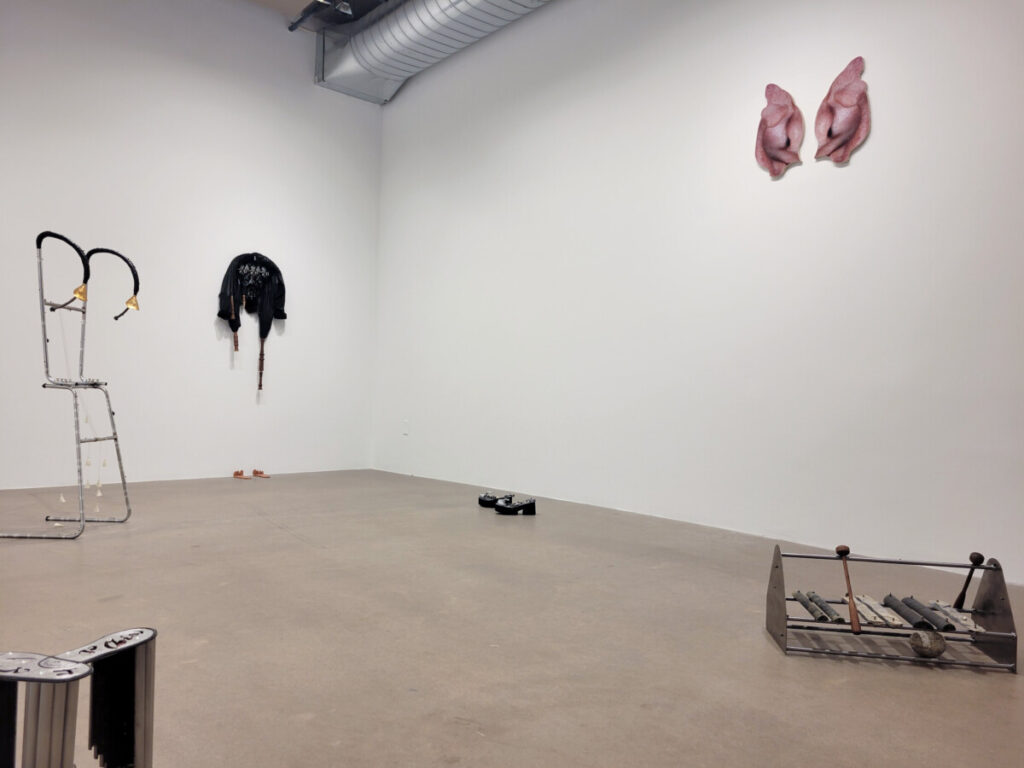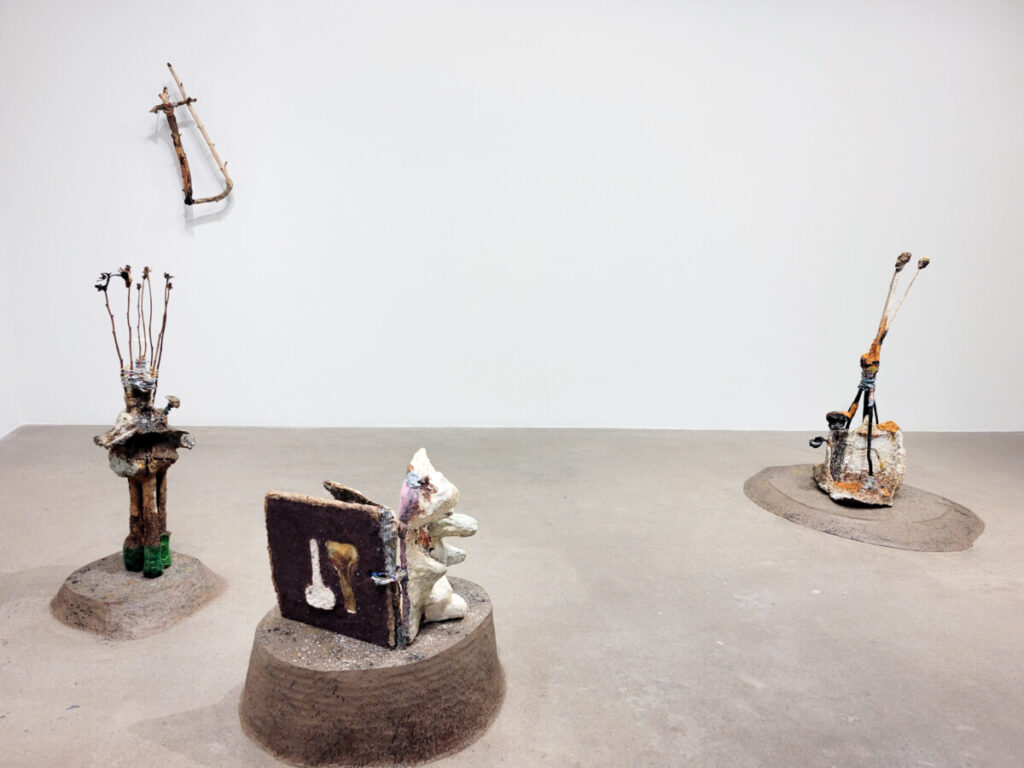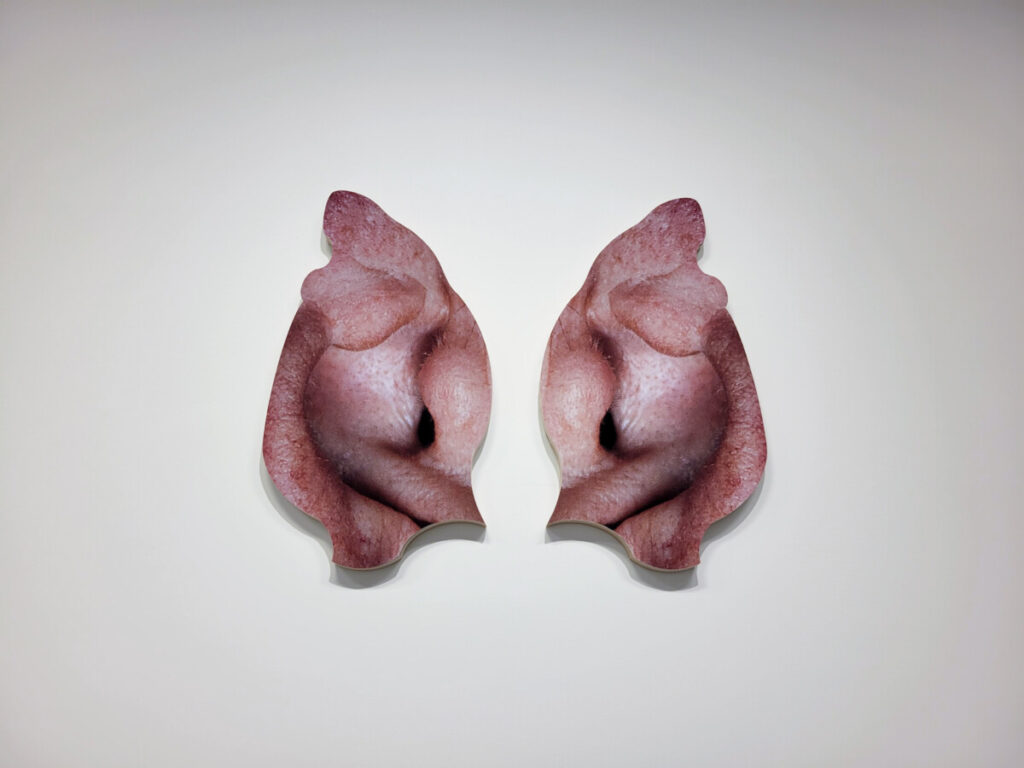From the mechanical to the organic, Concordia MFA students Émilie Allard and Kuh Del Rosario’s curious sculptural works draw uncanny connections between the familiar and the strange.
Émilie Allard’s cold and metallic readymades—a manufactured object repurposed as a work of art, think Marcel Duchamp—in Point of Irony, Point of Organ stand in stark contrast to Kuh Del Rosario’s viscerally organic sculptures in Summoning Black Beach. However, the adjacent exhibits, currently occupying the two distinct gallery spaces in the Mile End’s Centre Clark, create a curious dialogue when approached as a pair.

Both galleries are sparsely peppered with the artists’ works that stand out against the cold white walls and concrete floors. Any didactics or titles to accompany the works on display have been excluded from the installation space, which encourages the viewer to approach the body of work as a cohesive whole, rather than a collection of individual pieces.

Each artist employs a strikingly unique visual language to engage with the familiarly unfamiliar. In other words, whether it is a set of reconfigured aluminium chair legs turned upside down and strung up with bells (Allard, “Le rêve et l’argent”) or an oozing pool of grimy water and salty, porous rocks (Del Rosario, “invocation na babayin itim”), both artists use recognizable materials to create unrecognisable, abstracted forms that call into question our ability to materialise that which only exists in our minds.
Installed high-up on the gallery wall of Allard’s exhibit, something between a photograph and a sculpture resembles a fleshy pair of ears, but they are abstracted beyond immediate recognition—it takes a moment for the viewer to grasp what they are looking at. The manipulated organs appear to be poised to listen to the hypothetical music of the stone xylophone below them, yet the room remains positively silent.

The works seem to speak to the fallibility of memory—try remembering what a pair of ears looks like if you aren’t looking at one, or try remembering what a xylophone sounds like. What do you see in your mind’s eye? What do you hear? Is it, perhaps, an imperfect, abstracted version of the real thing? Allard’s work seems to seek out what is revealed to us when our minds attempt to piece together what something looks, feels or sounds like when we cannot immediately access it.
Similarly, Del Rosario’s sculptures harken back to the artist’s abstracted memories of her homeland of Batan in the Philippines. In a statement that accompanies the exhibit, Marissa Largo asks: “How does one return to a place that no longer exists?” This recalls the artist’s memory of a journey taken with her late father to a beach that she has not been able to locate since his passing. “Summoning Black Beach proposes an alternative way to return and to reconnect with that which has been lost,” Largo wrote.
Both Point of Irony, Point of Organ and Summoning Black Beach will be on view at Centre Clark through Nov. 25. A closing reception will be held on Nov. 21 at 6 pm, which will feature readings from the artists.




